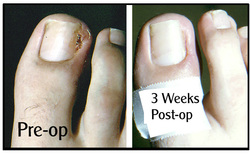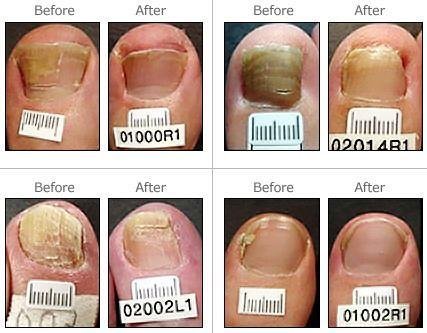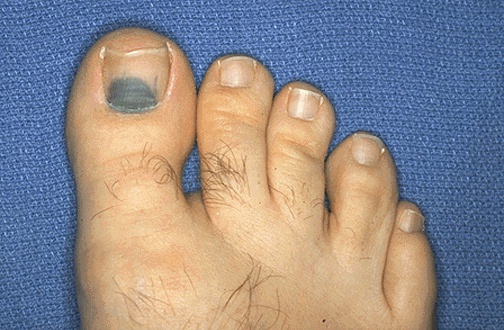In their protective role, nails bear the brunt of daily activities. Walking, running, wearing shoes or participating in sports cause some of the stresses and strains the feet must endure. All or a portion of the nail plate can be damaged when the feet are injured or abused.
Nail problems are commonly caused by improper trimming, minor injuries or repeated trauma. Some nail disorders can also be congenital. Proper trimming (along the contour) on a regular basis can help keep the toenails in the pink, as can wearing well-fitted, low to moderately heeled shoes.
Ingrown Toenails
 Painful ingrown nails may be congenital, caused by an over-curvature of the nail or by an imbalance between the width of the nail plate and the nail bed.
Painful ingrown nails may be congenital, caused by an over-curvature of the nail or by an imbalance between the width of the nail plate and the nail bed.
Toe injuries that change the nail’s contour also can lead to an ingrown toenail. Toe deformities (such as a bunion that forces the big toe to lean toward the second toe), high-heeled or narrow, pointed shoes can put pressure between the nail and soft tissues, eventually forcing the nail to grow into the skin.
Symptoms may include redness, swelling and infection can make the toe very painful. Ingrown nails can be accompanied by other toe disorders, such as excess surrounding tissue or an outgrowth of bone beneath the nail.
Fungal Infections
 Various types of fungi are present everywhere in the environment. The dark, moist surroundings created by shoes and stockings make the feet especially susceptible to fungal infection.
Various types of fungi are present everywhere in the environment. The dark, moist surroundings created by shoes and stockings make the feet especially susceptible to fungal infection.
Most fungi are harmless until they penetrate the skin. A fungus can invade through minor cuts, or after injury or repeated irritation to the toes have caused the nail to separate from the bed. Fungal infections of the nail plate and nail matrix are quite common.
Symptoms:
Fungus may cause the nail to thicken and become yellow or brownish. As the fungus grows, foul-smelling, moist debris can be seen. Pressure from a thickened nail or the build-up of debris may make the toe painful.
Hematoma (Blood Beneath The Nail)

A very common result of active lifestyles is blood, or a hematoma, beneath the toenail. Hematomas are especially common among people who jog or play tennis, caused by the toes repeatedly rubbing against the shoe.
A hematoma might indicate a fractured bone, especially after an injury (such as dropping a heavy object on the end of the toe). The toe should be examined by a podiatric surgeon, who may take an X-ray to determine the most appropriate treatment.
